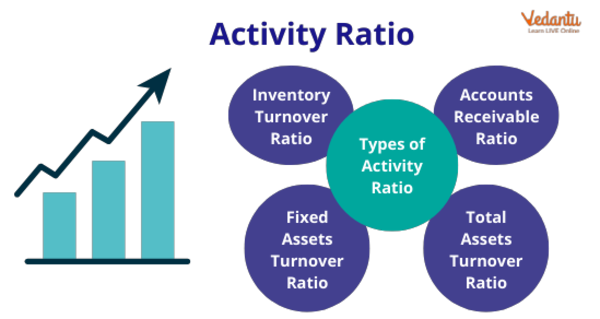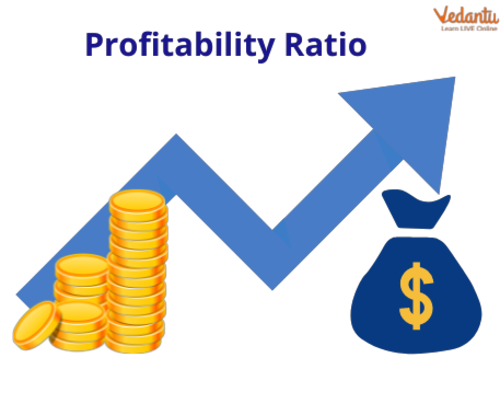




Activity and Profitability Ratio: An Introduction
Activity ratios measure how efficiently a company operates. This is commonly known as the "Assets Management Ratio," or how well management uses the company's assets to generate as much income as possible. This ratio typically displays the number of sales of particular asset categories.
Profitability ratios are financial indicators that help measure and analyse a company's ability to profit. These talents can also be evaluated over time using the income statement, balance sheet, shareholder's equity, or sales processes. The profitability ratio formula also demonstrates how efficiently a company uses its resources to generate profits and provide value for its shareholders.
What is the Activity Ratio?
Activity ratios assess a company's operating efficiency by examining fixed assets, inventories, and accounts receivable. It describes a company's financial health and demonstrates how the balance sheet's elements are used. Activity ratios are financial ratios that a company uses to determine how effectively it can use the various operating assets listed on its balance sheet to generate revenue or cash. The activity ratio is also known as the efficiency and the more well-known turnover ratio.

Activity Ratio
What is the Profitability Ratio?
Analysts and investors use profitability ratios to measure and evaluate a company's ability to generate money (profit) from sales, balance sheet assets, operating costs, and shareholders' equity over a given period. They show how effectively a company uses its resources to generate profit and shareholder value.
Most businesses strive for a higher ratio or value because doing so typically indicates that the company is profitable and producing cash flow. The ratios are most useful compared to other companies in the same industry or earlier periods.

Profitability Ratios
Activity Ratio Types with Formula
Different activity ratios may be used to make decisions depending on the type of business. Using examples and calculations, let's look at activity ratio types with the activity ratios formula.
Inventory Turnover Ratio
This activity ratio formula displays the number of times an inventory-holding company's stock has been entirely depleted within a single accounting period.
Inventory Turnover Ratio = Cost of Goods Sold / Average Cost of Inventory.
Total Assets Turnover Ratio
The net sales of total assets are calculated using the total assets turnover ratio. In other words, it shows how well a company can make money. It aids investors in comprehending how well businesses use their assets to generate money.
Total Assets Turnover Ratio = Sales / Average Total Assets.
Profitability Ratio Types with Formula
Profitability ratios show a company's ability to create profits from its operations.
Let us discuss the various profitability ratio types using the profitability ratios formula.
Gross Profit Ratio
The gross profit ratio is a profitability measure that evaluates the relationship between gross profit and net sales revenue. It is also known as the Gross Profit Margin when expressed as a percentage.
Gross Profit Ratio = Gross Profit/Net Revenue of Operations × 100
Operation Ratio
An operating ratio calculates the cost of operations to the income generated by operations.
Operating Ratio = (Cost of Revenue from Operations + Operating Expenses)/ Net Revenue from Operations ×100
Solved Question
Q. How has the profitability ratio been interpreted? Explain with examples.
Ans. Every company wishes to be profitable. A higher gross margin indicates that a company either charges premium prices for its products or has low direct costs, positioning it advantageously in the market. As a shareholder, you must also evaluate the profitability ratios to assess the company's financial success. In contrast, a lower gross margin can indicate bad pricing or high direct costs. However, the company's product mix may evolve, resulting in a lower gross margin.
Despite a poor operating margin and a favourable gross margin, the corporation spends too much on fixed costs. Increased rents, higher employee salaries, and so on.
Conclusion
The activity ratio, which measures how quickly assets can be converted into cash or sales, can be used to forecast a company's performance. Management and accounting departments can evaluate their effectiveness using a variety of activity ratios. The two most common ratios are inventory turnover and total asset turnover. It is common practice to analyse and compare ratios with other companies in the industry.






FAQs on Activity and Profitability Ratios: Key Differences
1. What are the advantages of the activity ratio?
Activity ratios are critical indicators of a company's operational efficiency. It also explains how a company makes money and uses the balance sheet components to manage its operations. Activity ratios are especially useful when comparing two organisations in the same industry to assess how one company compares to its competitors. Whereas activity ratios can track a company's financial performance throughout multiple recording periods and identify changes over time. The stock turnover ratio is the most important activity ratio because it demonstrates how inventory/average stock and cost of goods sold connect.
2. Is there a high-profit ratio?
While calculating your company's profitability ratio, you may be unsure about your objectives. In general, the higher the ratio, the better your organisation performs. It also depends on the ratio and the specifics of your organisation. For example, the operating margin ratio should be larger than 1.5 per cent, with many businesses aiming for 2. Aiming for a net income ratio of 5% is a good idea. These percentages are not fixed, but you should always aim to improve your firm in any way you can to maximise your profitability ratio.
3. What is the difference between the activity and profitability ratio?
Investors can examine several aspects of a company's financial health using basic analytical approaches such as activity and profitability ratios. Profitability ratios show the earnings of a corporation. Efficiency ratios, however, show how effectively the company uses its resources to generate money. Analysts can use profitability ratios to compare a company's earnings to those of its competitors in the same industry. These ratios can also be used to assess a single company's performance over multiple reporting periods.





















